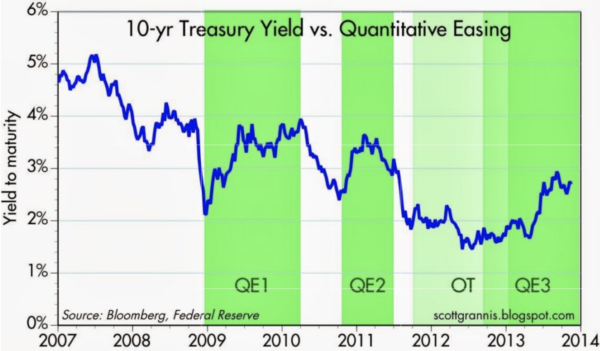
Here’s Who REALLY CONTROLS Interest Rates (It’s Not The Fed)

The Misconception of Federal Reserve’s Authority The pervasive narrative portrays the Federal Reserve as the omnipotent conductor of the economy, with Jerome Powell heralded as the pilot capable of ensuring a smooth landing for America’s financial future. But what if this perception is more myth than reality? This is more than a mere academic query—it strikes at the heart of our financial system’s supposed safeguards.
The Experiment: Challenging the Status Quo Consider a simple thought experiment. Imagine the Fed never raised rates in 2022, leaving the fed funds rate at zero. Where would the 10-year Treasury yield lie? With its current rate hovering around 4.8%, it’s logical to deduce that the figure might remain unaffected by the Fed’s inaction. However, this leads to a startling revelation: the Fed may not be the puppet master of interest rates it’s believed to be.
Unpacking the Fed’s Influence: A Closer Look at Interest Rates Let’s delve deeper into history. When the Fed began to tighten its policy, the 10-year Treasury yield was approximately 1.5%. Had the Fed held rates steady at zero amidst soaring CPI rates of 9% or more, would the 10-year Treasury yield have stagnated at a mere 80 basis points? Unlikely. The yield would arguably have climbed, possibly even outpacing the CPI, thereby indicating that the Fed’s actions may, in fact, lower rates at the long end of the curve.
Bank Reserves and the Illusion of Control The narrative crumbles further when examining bank reserves. In 1980, with the fed funds rate at about 15%, bank reserves stood at $41.2 billion. Fast forward to 2007, the fed funds rate had dropped to approximately 5%, yet bank reserves had barely budged. During this period, M2 money supply soared from $1.5 trillion to $7.5 trillion, debunking the myth that the Fed’s open market operations, which are supposed to adjust reserves to control rates, have any substantial impact.
The Bank of England’s Admission: A Banking System Exposé Even the Bank of England admits that bank lending decisions create bank deposits, and thereby determine the level of central bank reserves. The Fed, then, is not providing liquidity but rather accommodating the banking system’s expansion, which is driven by profit motives rather than reserve availability.
It is these lending decisions that
Bank of England
determine how many bank deposits are created by the banking
system. The amount of bank deposits in turn influences how
much central bank money banks want to hold in reserve (to
meet withdrawals by the public, make payments to other
banks, or meet regulatory liquidity requirements), which is
then, in normal times, supplied on demand by the Bank of
England
Quantitative Easing: A Misguided Effort? The trend continues with quantitative easing (QE). The green shaded areas in our charts depict periods of QE, ostensibly aimed at reducing long-term interest rates. Paradoxically, rates increased during QE, suggesting that if the fed funds rate were zero today, the 10-year yield might be even higher.

The Gold Standard vs. Central Banking: A Surprising Parallel A historical comparison with the gold standard era from 1880 to 1895 shows a similar growth in money supply, underscoring that neither gold nor central bank actions have been the true arbiters of monetary expansion. It’s the banks themselves, with their lending activities, that have been and continue to be the real drivers.
The Banks, Not the Fed, Are in the Driver’s Seat The data is compelling: the banks, powered by counterparty risk considerations, are the ones controlling money supply and, by extension, interest rates. The Fed’s role is more reactive than proactive, and its capacity to prevent a hard landing for the economy is far from guaranteed. As we navigate economic uncertainties, it becomes clear that the true guardians of our financial stability are not seated at the central bank but within the banking system itself.
